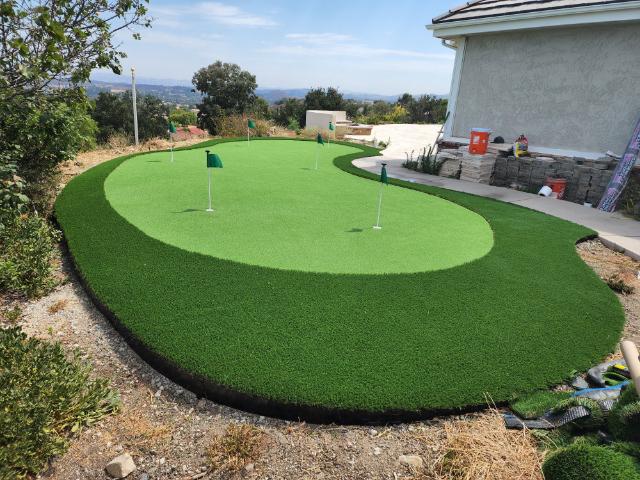Choosing between natural grass and synthetic turf for your lawn or sports field in Woodland Hills, CA, involves considering various factors, including maintenance costs. While natural grass may offer a traditional look and feel, synthetic turf is becoming increasingly popular due to its durability and low maintenance requirements. In this blog, we’ll explore whether natural grass or synthetic turf is more cost-effective to maintain in Woodland Hills, CA, helping you make an informed decision for your landscaping needs.
Comparing Maintenance Costs of Natural Grass and Synthetic Turf
Natural Grass Maintenance Costs:
Water Usage: In Woodland Hills, CA, where water scarcity is a concern, natural grass requires regular watering to stay green and healthy, especially during hot summer months. The cost of watering can add up significantly over time, especially with rising water rates.
Mowing and Trimming: Regular mowing and trimming are necessary to keep natural grass at an appropriate height and prevent it from becoming overgrown and unkempt. While homeowners can opt to do this themselves, hiring a professional lawn care service may be necessary for those with busy schedules, adding to the maintenance expenses.
Fertilization and Weed Control: Natural grass requires periodic fertilization and weed control treatments to promote healthy growth and prevent invasive weeds from taking over. These treatments incur additional costs, including purchasing fertilizers and herbicides or hiring professional lawn care services.
Synthetic Turf Maintenance Costs:
Water Savings: Synthetic turf eliminates the need for watering, significantly reducing water usage and associated costs. In a dry climate like Woodland Hills, CA, where water conservation is important, synthetic turf offers a sustainable alternative to natural grass.
Minimal Maintenance: Unlike natural grass, synthetic turf does not require mowing, trimming, or fertilization. Once installed, it maintains its appearance year-round with minimal upkeep, saving homeowners time and money on maintenance tasks.
Long-Term Durability: Synthetic turf is designed to withstand heavy foot traffic, harsh weather conditions, and prolonged sun exposure without fading or deteriorating. While natural grass may require periodic overseeding or sod replacement to address bare patches or damage, synthetic turf remains consistently green and vibrant with minimal maintenance.
Considering Long-Term Value of Synthetic Turf
- Initial Investment vs. Long-Term Savings:
While the initial cost of installing synthetic turf may be higher than seeding or sodding natural grass, the long-term savings in maintenance expenses can outweigh the upfront investment.
Homeowners in Woodland Hills, CA, can enjoy reduced water bills, lower maintenance costs, and a consistently green lawn year-round with synthetic turf, making it a cost-effective choice in the long run. Additionally, synthetic turf offers other benefits, such as enhanced durability, weed resistance, and allergen reduction, further increasing its value proposition over time.
- Environmental Impact:
Choosing synthetic turf over natural grass can also have environmental benefits, particularly in water-stressed regions like Woodland Hills, CA. By conserving water and reducing the use of pesticides and fertilizers, synthetic turf helps minimize environmental impact and promote sustainability.
Homeowners can feel confident knowing that their landscaping choice contributes to water conservation efforts and helps mitigate the effects of drought on local ecosystems.
Conclusion
While the initial cost of installing synthetic turf may be higher than natural grass, the long-term savings in maintenance expenses and environmental benefits make it a cost-effective and sustainable choice for homeowners in Woodland Hills, CA. By opting for synthetic turf, homeowners can enjoy a beautiful, low-maintenance lawn year-round while saving money and conserving water resources.


